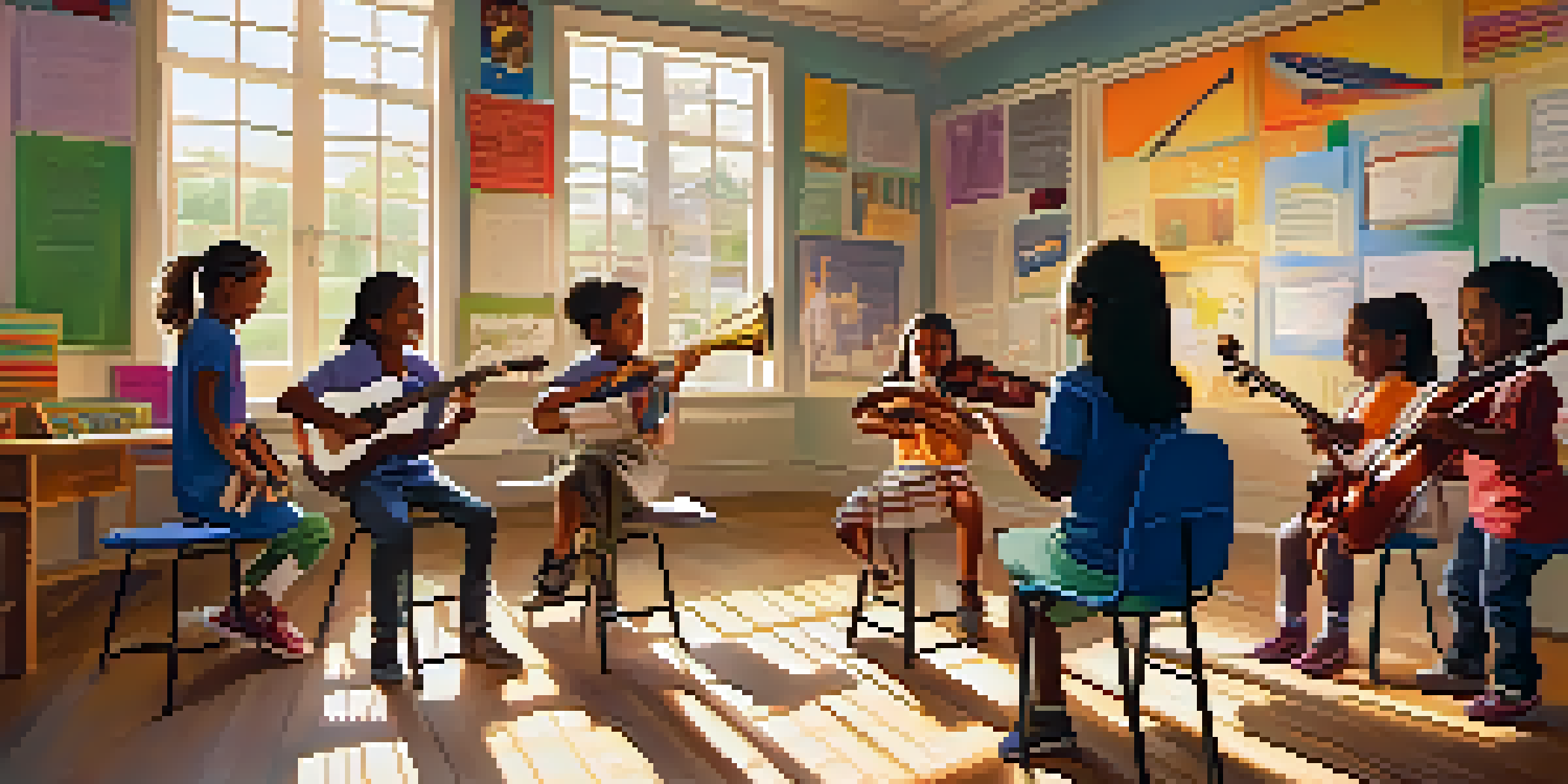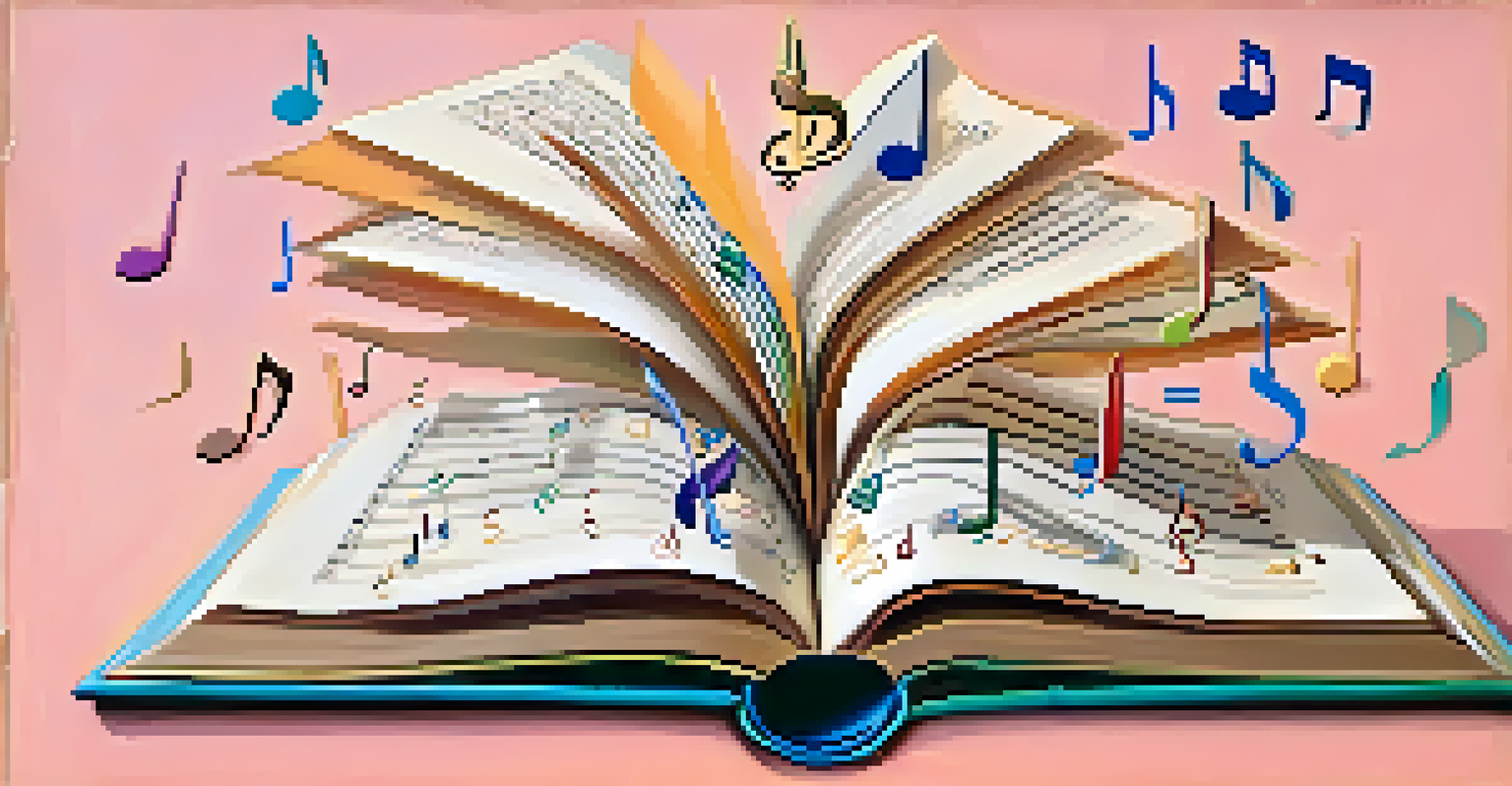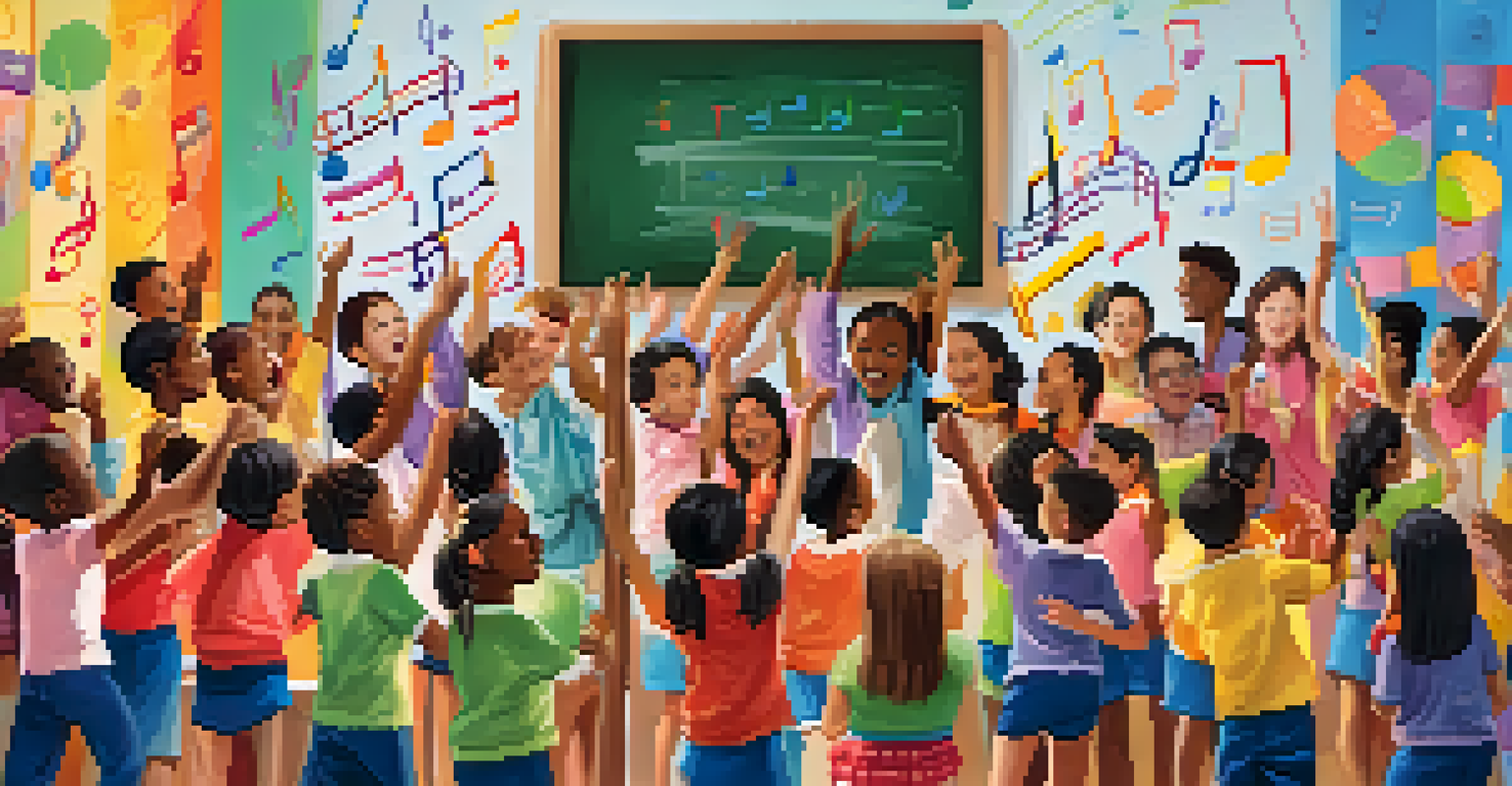Music and Memory in Education: Enhancing Learning Outcomes

Understanding Music's Impact on Memory Retention
Music and memory are closely intertwined, with numerous studies showing that musical elements can enhance memory retention. When students learn material set to music, they often recall it better than through traditional study methods. This phenomenon occurs because music engages multiple brain areas, making information more memorable.
Music can change the world because it can change people.
Think back to your school days—how many times did you find yourself humming a tune while trying to remember facts? The rhythm and melody can create a mental hook that makes recalling information easier. For instance, educational songs about the alphabet or multiplication tables have been used for decades to aid learning.
Moreover, music can also evoke emotions, which further solidifies memories. When students associate positive feelings with learning through music, they're more likely to engage with the material and retain it long-term.
The Science Behind Music and Learning
Research has shown that music can activate the brain's reward system, releasing dopamine and making learning more enjoyable. This chemical response can motivate students to engage with the material more actively. Furthermore, studies suggest that background music can create a conducive learning environment, especially when it comes to tasks requiring focus.

For example, a soft classical piece playing in the background can help reduce distractions and promote concentration. This is particularly useful in classrooms where a calm atmosphere is essential for effective learning. The key is to ensure the music complements the task rather than overwhelms it.
Music Enhances Memory Retention
Integrating music into learning helps students recall information more effectively by engaging multiple areas of the brain.
Additionally, different genres of music can influence various learning outcomes. Upbeat tempos might energize students for group activities, while slower music can calm nerves before tests. Understanding these dynamics can empower educators to create tailored learning experiences.
Practical Applications of Music in the Classroom
Integrating music into the classroom doesn't have to be complicated. Teachers can start by incorporating songs related to lesson topics, using them as a fun way to introduce or review material. For example, learning about ecosystems could be paired with a catchy song about the food chain, making the lesson memorable.
The only truth is music.
Another effective strategy is using rhythm and beats to teach concepts. Clapping or tapping along to a beat can reinforce patterns in math or language learning. This kinesthetic approach helps students internalize information through physical engagement, making the learning process more dynamic.
Furthermore, creating a classroom playlist that students can contribute to fosters a sense of community. When students feel connected to the music being played, they're more likely to participate actively in discussions and activities, enhancing their overall learning experience.
The Role of Music in Different Learning Styles
Every student has a unique learning style, and music can cater to these differences effectively. For auditory learners, incorporating music and songs into lessons can significantly enhance comprehension and retention. Visual learners might benefit from videos that combine visuals with music, creating a more immersive experience.
Kinesthetic learners, who learn best through movement, can thrive in music-infused activities. For example, incorporating dance or movement to music while teaching can help solidify concepts through physical activity. This approach not only aids learning but also brings a fun element into the classroom.
Music Supports Different Learning Styles
Utilizing music in education caters to various learning styles, making lessons more inclusive and engaging for all students.
Recognizing these diverse learning styles allows educators to create inclusive lesson plans that engage all students. By embracing music as a teaching tool, teachers can cater to varying preferences and enhance the overall learning environment.
Fostering Emotional Connections Through Music
Music has a unique ability to evoke emotions, and this can play a vital role in the educational process. When students connect emotionally with a piece of music, they're more likely to remember the associated content. This emotional resonance can foster a deeper understanding of complex topics.
For instance, using music that reflects cultural themes during lessons on history can help students empathize with historical figures and events. Integrating these emotional elements allows students to approach learning from a more personal perspective, creating lasting impressions.
Furthermore, encouraging students to express their feelings about music in relation to their learning can cultivate a supportive classroom environment. This practice can enhance their emotional intelligence, contributing to their overall development as learners and individuals.
Challenges of Implementing Music in Education
While there are many benefits to incorporating music into education, challenges do exist. One major hurdle is the perception that music is merely an extracurricular activity rather than an essential learning tool. Convincing educators and administrators of its value can take time and effort.
Additionally, not all music is conducive to learning. Selecting appropriate musical pieces that enhance rather than distract from the learning process is crucial. Teachers must be mindful of volume, genre, and lyrics to ensure that music serves as a supportive backdrop rather than a disruptive force.
Emotional Connections Boost Learning
Music evokes emotions that can deepen students' understanding and retention of complex topics by fostering personal connections.
Lastly, it’s important to consider the diverse musical preferences of students. What resonates with one student may not appeal to another, making it essential for educators to seek input and create a balanced musical repertoire that reflects the interests of the entire class.
The Future of Music in Education
As technology continues to evolve, the integration of music in education is likely to grow more sophisticated. Online platforms and apps that combine music with learning are becoming increasingly popular, offering engaging ways for students to absorb information. This trend could pave the way for more personalized learning experiences that cater to individual needs.
Furthermore, with the rise of remote learning, educators are exploring innovative ways to incorporate music into virtual classrooms. From live musical performances to interactive music-based assignments, the possibilities are endless. This shift could revolutionize how music is utilized in education, making it accessible to a broader audience.

Ultimately, the future looks promising for the integration of music in education. By embracing these changes and continually exploring new methods, educators can harness the power of music to enhance learning outcomes and foster a love for learning in students.